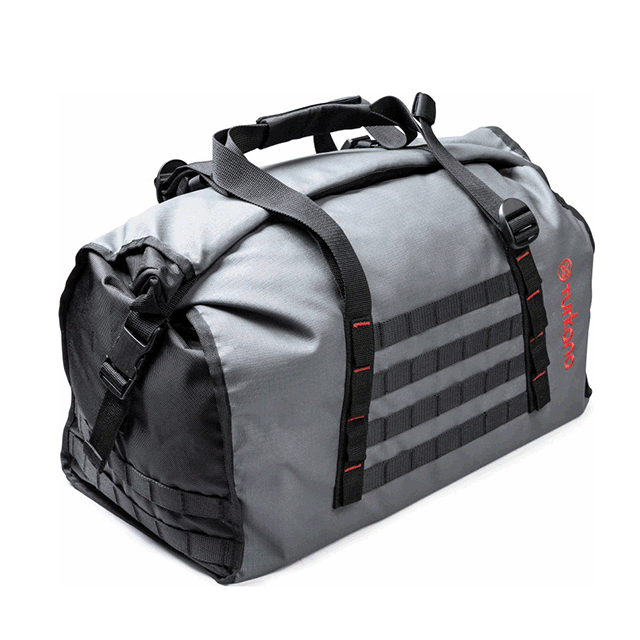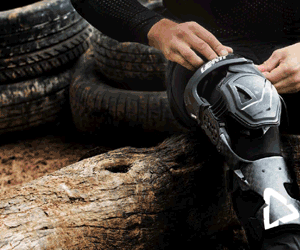The two motorcycles make their way across the rocks, through icy streams and giant puddles. The riders are exhausted. They are so tired after a full day of riding that they are barely able to pull one of the bikes out of the mud when it gets stuck unexpectedly. It’s been 30 miles since a passerby directed them to turn right at the next junction. They are in Peru and are attempting to reach Cajamarca. But even Google maps seems to have misplaced their destination. So they keep going and by the time they spot the flickering lights of a human settlement on the horizon they have been driving in the dark for two hours. They are at 13000 feet, the air is cold, and their energy equally thin. But then out of the darkness appears Abraham, a miner wearing a headlamp, who owns the land they are now on. “You should stay with us tonight.”, he says and just as well since they also learn, “You’re three-and-a-half hours from civilization.” The only thing left is to pitch camp in the dark. With a couple of tarps from their host, they set up. In the morning the two friends find themselves looking out over a far-flung valley. With the light of day, a rushing sense of freedom and adventure floods their minds. They are ready to hit the road again.

“This type of situation happened over and over again on the trip. Moments of struggle and despair were followed by ones of rare beauty. Every place we went, we met people who would do anything they could to help us out. Somewhere along the way, you learn not to panic when something goes wrong, but to trust that things will work out in the end.”

The two friends, Matias Corea and Joel Estopà are on an extended trip driving their bikes 18,000 miles (29000 kms), through 13 countries in six months. They started in New York and headed to Ushuaia in the Tierra del Fuego Province of Argentina on the southern tip of the Americas.
But for this dream they needed bikes. They knew they wanted older model GS’s. No fuel injection, no chips, and no sensors to deal with on the road. They wanted a standard wiring harness and electrical system so if needed repairs would be straightforward. “The possibility of the same component failing on both bikes was small. Micro relays, a condenser, voltage regulator, a rotor, diode board and a dual coil is everything you need to fix a faulty electrical system on these bikes. You just need to pop the tank or the alternator cover, and everything is right there.”

So a 1985 BMW R80G/S Paris Dakar and a 1984 BMW R80ST were sourced. The ST was treated to a front end conversion from an R100GS – giving it the abilities of it’s 1985 Paris Dakar amigo. Fuel was also a consideration given the terrain and altitude they would be covering. For this, the stock 9 gallon/32 ltr tank on Matias’s R80GS and the 6 gallon/24 ltr on Joel’s ST would give them an average range of around 385 miles (615 km) and 295 miles (468 km) respectively. Although Matias does admit in a redo, they would upgrade the ST with a GS tank.

All the prep work was done at Peter Boggia’s workshop Moto Borgotaro in Brooklyn, NY. Both motorcycles’ front suspension was upgraded with Promoto progressive springs from Wilbers. The GS already had a top of the line Road & Track BM 317 rear shock installed, but it hadn’t been serviced in a while. The guys at Ohlins USA completely rebuilt it and pre-loaded it to Matias’s specifications. The ST got a brand new Wilbers Type 530 Road rear shock.
Clearwater Glenda lights for extra visibility in dark areas without road lighting were installed on the crash bars of both bikes. “It came in very handy while camping in the wild, or when we got lost in the mountains of Peru, and the plains of southern Bolivia.”

Also installed were heated grips in anticipation of all the cold weather riding encountered while crossing mountains. “They were essential to keep us pushing through the roughest conditions. Cold hands are some of the most miserable riding you can do; I would never leave without heated grips!”
A Battery Tender USB plug was installed straight to the battery to be able to charge phones (used as GPS), the cameras and the Sena blue tooth communicators. On the motorcycles themselves, the standard battery was switched out for a Shorai Lithium battery which weights only 0.483 kg/1.06 lbs.
For the tires, Heidenau K60 Scouts were fitted. “They are 60/40 on road/offroad and are very hard which makes them great for this type of trip as they last longer and you rely less on having to source tires every month. People mention that they have little grip on wet roads, we went through 2 months of wet roads and never had an issue.”

Ask Matias how best to prepare for a trip like this, and he replies: “Preferably not at all.” He says he gained little from asking people their opinion before they left. In fact, it tended to be more off-putting than anything else.
“We were given a very negative view of the world. ‘Are you crazy? There are gangs, and people get killed all the time! The roads are too dangerous!’ The funny thing is that all the negative stuff was from people who’d never done the trip themselves.”
“But we found we were never short of opportunities to talk to the locals and find out more about them. We spend so much of our everyday lives focused on ourselves, but what I found so stimulating about this trip was the chance to meet other people and learn about how they live and view the world.”

“There was no point in planning a route either. Roads that are on the map might have been washed away three days before you got there or buried in a rockfall.” And when asked about what he would have changed on the bikes the second time around? Matias admits that Siebenrock Adventure head covers (which allow you to top up your engine oil from the side cover), Acerbis hand guards, lighter silencer, HPN windshield and a WP Suspension Upside-Down front end would have done nicely.
“There are the obvious practical benefits of traveling by motorcycle. You can fit onto the smallest ferry, squeeze over the narrowest bridges and if you get stuck in the mud, unlike in a car, you may well be able to pull the bike out on your own. Also, with two riders you can help the other bike if one breaks down…”

“…This feeling of independence is one of the things that grab people most about touring on two wheels. But the really compelling side of it is what happens within yourself, your own journey.”
For more info about Matias and Joel’s journey visit Two Wheels South and on Instagram.





Leave a Reply